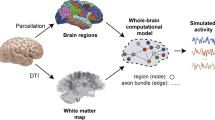Abstract
Recent neuropsychological research has begun to reveal that neurons encode information in the timing of spikes. Spiking neural network simulations are a flexible and powerful method for investigating the behaviour of neuronal systems. Simulation of the spiking neural networks in software is unable to rapidly generate output spikes in large-scale of neural network. An alternative approach, hardware implementation of such system, provides the possibility to generate independent spikes precisely and simultaneously output spike waves in real time, under the premise that spiking neural network can take full advantage of hardware inherent parallelism. We introduce a configurable FPGA-oriented hardware platform for spiking neural network simulation in this work. We aim to use this platform to combine the speed of dedicated hardware with the programmability of software so that it might allow neuroscientists to put together sophisticated computation experiments of their own model. A feed-forward hierarchy network is developed as a case study to describe the operation of biological neural systems (such as orientation selectivity of visual cortex) and computational models of such systems. This model demonstrates how a feed-forward neural network constructs the circuitry required for orientation selectivity and provides platform for reaching a deeper understanding of the primate visual system. In the future, larger scale models based on this framework can be used to replicate the actual architecture in visual cortex, leading to more detailed predictions and insights into visual perception phenomenon.










Similar content being viewed by others
References
Becker J et al (2007) Dynamic and partial FPGA exploitation. Proceeding of the IEEE 95:438–452
Burkitt AN (2006) A review of the integrate-and-fire neuron model: I.Homogeneous synaptic input. Bio Cybern 95:1–19
Chen K, Wang DL (2002) A dynamically coupled neural oscillator network for image segmentation. Neural Network 15:423–439
Culurciello E, Etienne-Cummings R, Boahen KA (2003) A biomorphic digital image sensor. IEEE J Solid-State Circuits 38:234–239
Dayan P, Abbott LF (2001) Theoretical neuroscience: computational and mathematical modeling of neural systems. MIT press, Cambridge
General Neural Simulation System (2010) http://www.genesissim.org/GENESIS/
Gerstner W, Kistler W (2002) Spiking neuron models: single neurons, populations, plasticity. Cambridge University Press, Cambridge
Girau B, Torres-Huitzil C (2007) Massively distributed digital implementation of an integrate-and-fire LEGION network for visual scene segmentation. Neurocomputing 70:54–67
Gokhale M, Graham PS (2005) Reconfigurable computing: accelerating computation with field-programmable gate arrays. Springer, London
Gotarredona S et al (2009) CAVIAR: a 45 k neuron, 5 M synapse, 12G connects AER hardware sensory-processing-learning actuating system for high-speed visual object recognition and tracking. Trans Neur Netw 20(9):115–128
Hodgkin AL, Huxley AF (1952) A quantitative description of membrane current and its application to conduction and excitation in never. J Physiol 117:500–544
Hubel D, Wiesel T (1962) Receptive fields, binocular interaction and functional architecture in the cat’s visual cortex. J Physiol (London) 160:106–154
Hubel DH, Wiesel TN (2004) Brain and visual perception the story of a 25-year collaboration. Oxford University Press, New York
Hunt JJ et al (2011) Statistical structure of lateral connections in the primate visual cortex. Neural Syst Circuits 1:3
Izhikevich E (2003) Simple model of spiking neurons. IEEE Trans. Neural Networks 14:1569–1572
Kandel E et al (2000) Principle of neuroscience, Elsevier
Koch C (1999) Biophysics of computation: information processing in single neurons. Oxford University Press, Oxford
Li G et al (2010) A FPGA real-time model of single and multiple visual cortex neurons. J Neurosci Methods 193:62–66
Löwel S (1994) Ocular dominance column development: strabismus changes the spacing of adjacent columns in cat visual cortex. J Neurosci 14:7451–7468
Nallatech Ltd (2006) BenNYEY-PCI-X-V4 Reference Guide, ver1, NT107-0273
Neuron Software Simulator Tool (2010) http://www.neurosolutions.com/products/ns/
Omondi AR (eds) (2006) FPGA Implementations of neural networks. Springer, London
Patterson DA, Hennessy JL (2003) Computer architecture: a quantitative approach. Morgan Kaufmann Publishers Inc, San Francisco, CA, USA
Rossmann M et al (1996) Implementation of a biologically inspired neuron-model in FPGA. In: Proceedings of fifth international conference on microelectronics for neural networks, pp 322–330
Satoh S, Usui S (2008) Engineering-approach accelerates computational understanding of V1–V2 neural properties, 7, 2008. 11(7):1959–1979; Cogn Neurodyn. 2009 March; 3(1):1–8
SpikeNET Neural Network Simulator (2011) http://www.spikenettechnology.com/
Wandell BA (eds) (1995) Foundations of vision. Sinauer Associates Inc, Sunderland, MA
Upegui A et al (2004) A hardware implementation of network of functional spiking neurons with Hebbian learning, biologically inspired approaches to advanced information technology, LNCS. Springer Berlin, pp 233–243
Wildie M et al (2009) Reconfigurable acceleration of neural models with gap junctions. In: Proceeding of field-programmable technology
Wörgötter F, Koch C (1991) A detailed model of the primary visual pathway in the cat: comparison of afferent excitatory and intracortical inhibitory connection schemes for orientation selectivity. J Neurosci 11(7):1959−1979
Acknowledgments
The authors thank to the financial support from National Science Foundation of China (Grant No. 60873047).
Author information
Authors and Affiliations
Corresponding author
Rights and permissions
About this article
Cite this article
Yang, S., Wu, Q. & Li, R. A case for spiking neural network simulation based on configurable multiple-FPGA systems. Cogn Neurodyn 5, 301–309 (2011). https://doi.org/10.1007/s11571-011-9170-0
Received:
Accepted:
Published:
Issue Date:
DOI: https://doi.org/10.1007/s11571-011-9170-0




